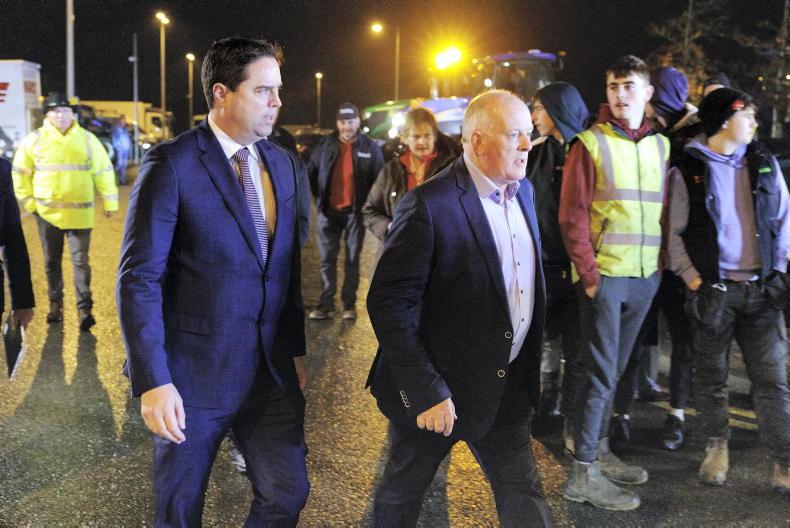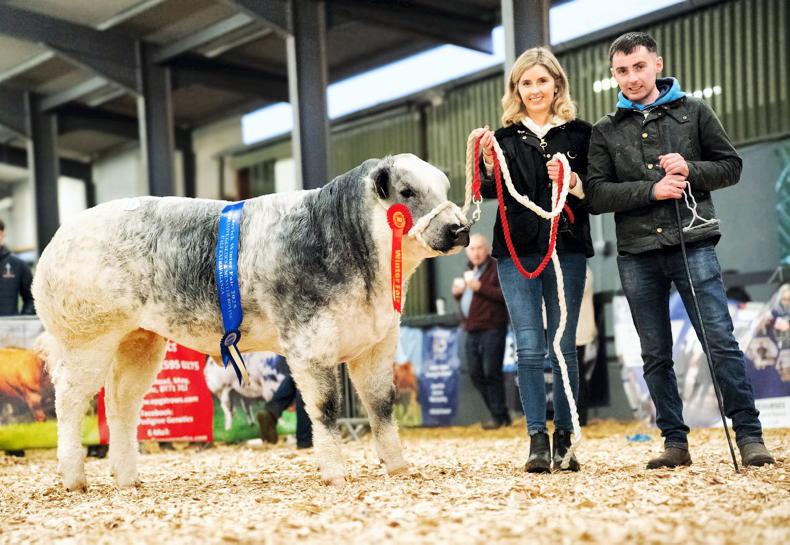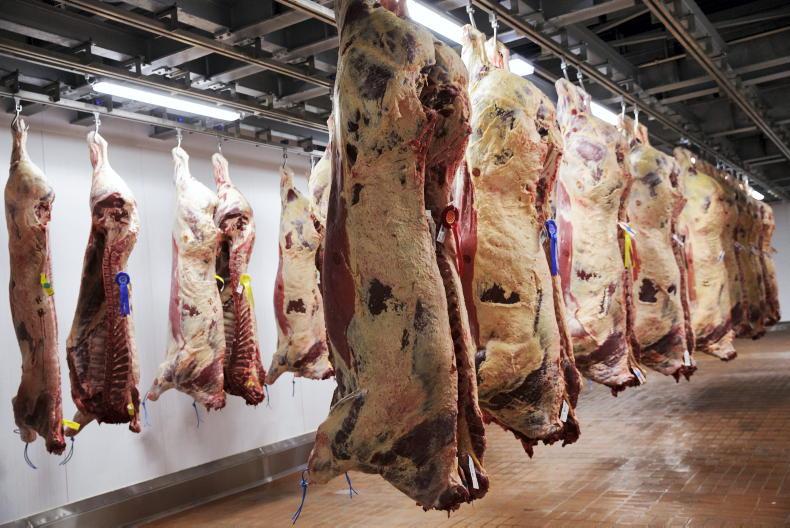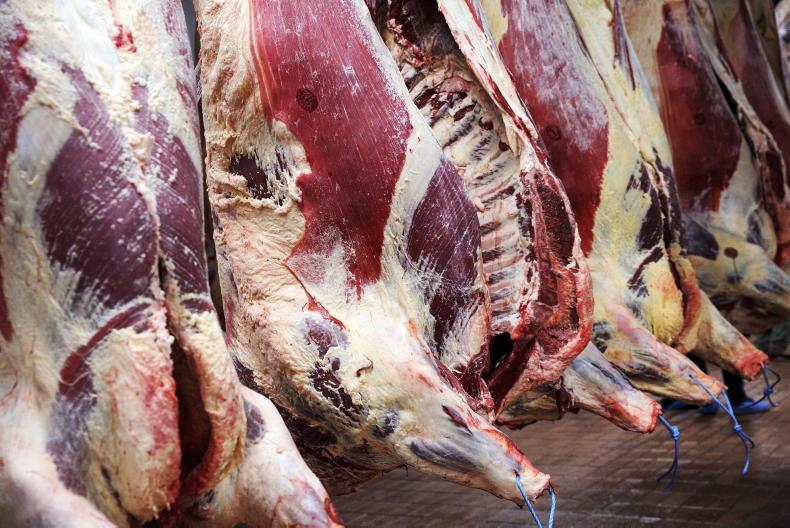There was some respite for farmers this week, as beef prices finally stopped falling and, as if to celebrate, the sun reappeared, which also eased the weather burden on farmers.
After 11 consecutive weeks of falling factory prices, this is a welcome break and the question now is where will the market go from here?
The indication is that at this moment it looks like more of the same for next week.
Farmers are prioritising field work with the break in the weather and there is less of a push to get cattle away.
Factories aren’t chasing cattle either, with many still not operating full-time and with a couple of days kill ahead of themselves.
Schools are reopening in the UK and this is usually a boost for forequarter beef.
However, the downside is that there has been plenty of this frozen in recent months, so this will counterbalance any additional demand.
More interesting is the beef export ban imposed by Argentina. This will drop the supply of the high-quality hind quarter cuts to the UK and EU market and increase the value of any stocks of these factories are holding.
Cattle price
Turning to cattle price, factories will be looking to buy the bulk of their steers at €4.60/kg next week, although €4.65/kg has been paid this week, but mainly for deals agreed last week.
It will take a boost in factory beef sales over the remainder of this week to make a €4.65/kg steer price more widely available going into next week.
For heifers, the going rate is looking like €4.65/kg, with factories reluctant to go to €4.70/kg.
However, as always, regular and large suppliers, as well as producer groups, can have deals 10c/kg to 20c/kg more, but these will only apply to an overall small number of cattle going into factories.
Young bulls
Young bulls are also holding this week, with U and R grades up to 24 months old selling between €4.70/kg and €4.80/kg flat and this was allowing for an odd good O grade in a batch as well.
However, when the batch was mainly O grades, quotes were between €4.50/kg and €4.60/kg. Under-16-month bulls on the grid were at €4.60/kg in the main, though with just a 12c/kg bonus.
The cow trade was also steady, with P+3+ cows with good cover making in the range of €3.70/kg to €3.80/kg, while the more suckler types making O grades were getting from €3.90/kg rising up to €4.00/kg in places.
R grading cows are exceptional and represent a small fraction of the cow kill and are worth up to €4.20/kg.
Prices for next week are expected to be in these ranges, but, as always with cows, targeting a factory that really wants cows is important and better prices tend to be available in the north and west, as those in mainly dairy regions find it handier to source cows.
Another point made by an agent this week is that cows have been culled ruthlessly all year, so there shouldn’t be a glut of numbers in the system waiting to go into the factories over the coming weeks.
Another factor that is becoming clearer over recent weeks is the impact of northern buyers for heavy cattle at the marts, with a very good trade for Angus cattle in the ring as well.
Northern Ireland trade
The trade has steadied in northern factories this week as well, with official quotes at £4.34/kg to £4.46/kg, the equivalent of €5.32/kg to €5.47/g with vat included.
However, deals are being done in general between £4.60/kg and £4.64/kg for regular suppliers of in-spec cattle.
Heifers are mostly being paid at steer prices. Cow quotes are at £3.46kg, the equivalent of €4.24kg with vat included, with between 5p/kg and 10p/kg (6c/kg to 12c/kg) more being paid in deals.










SHARING OPTIONS